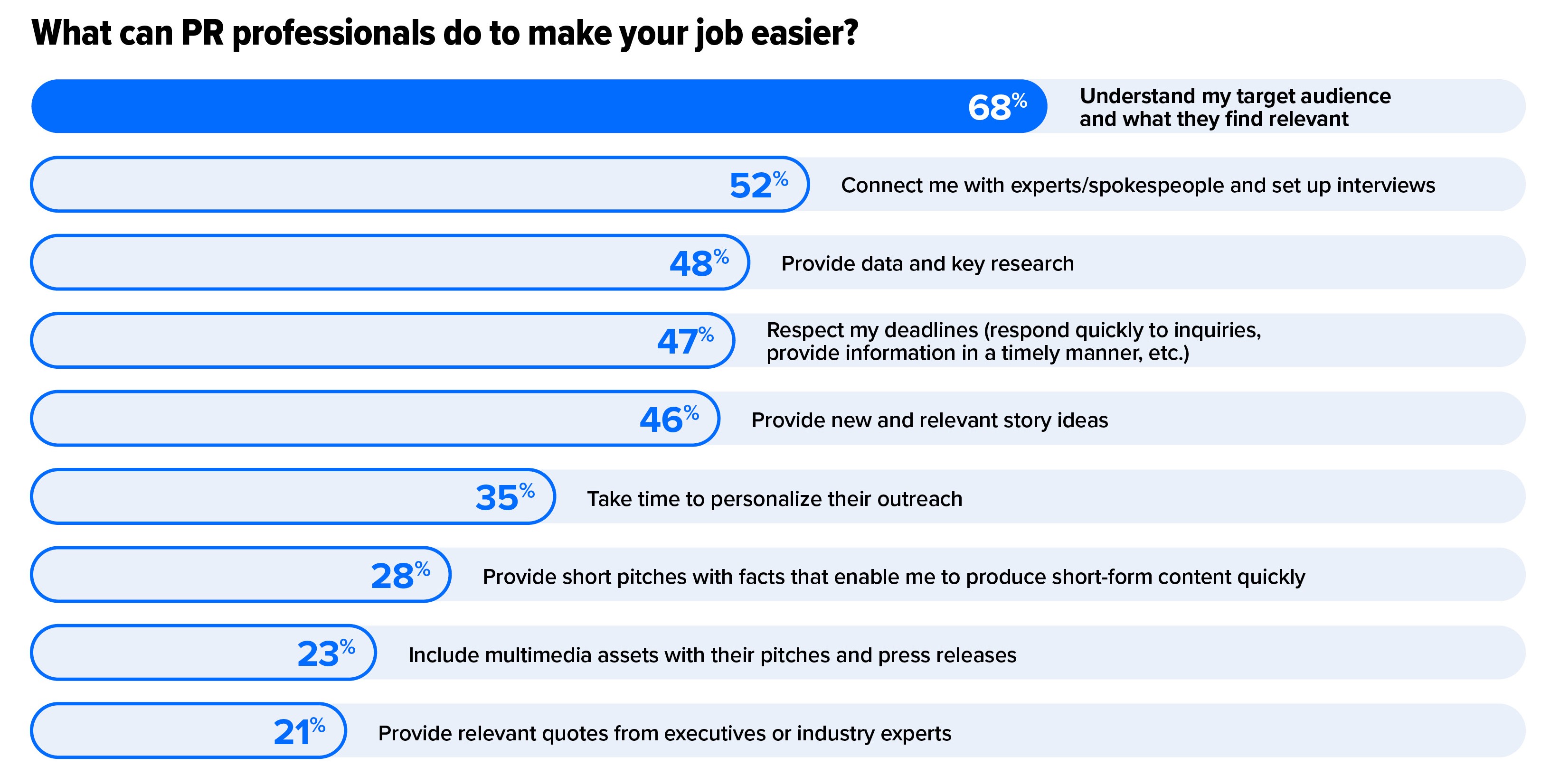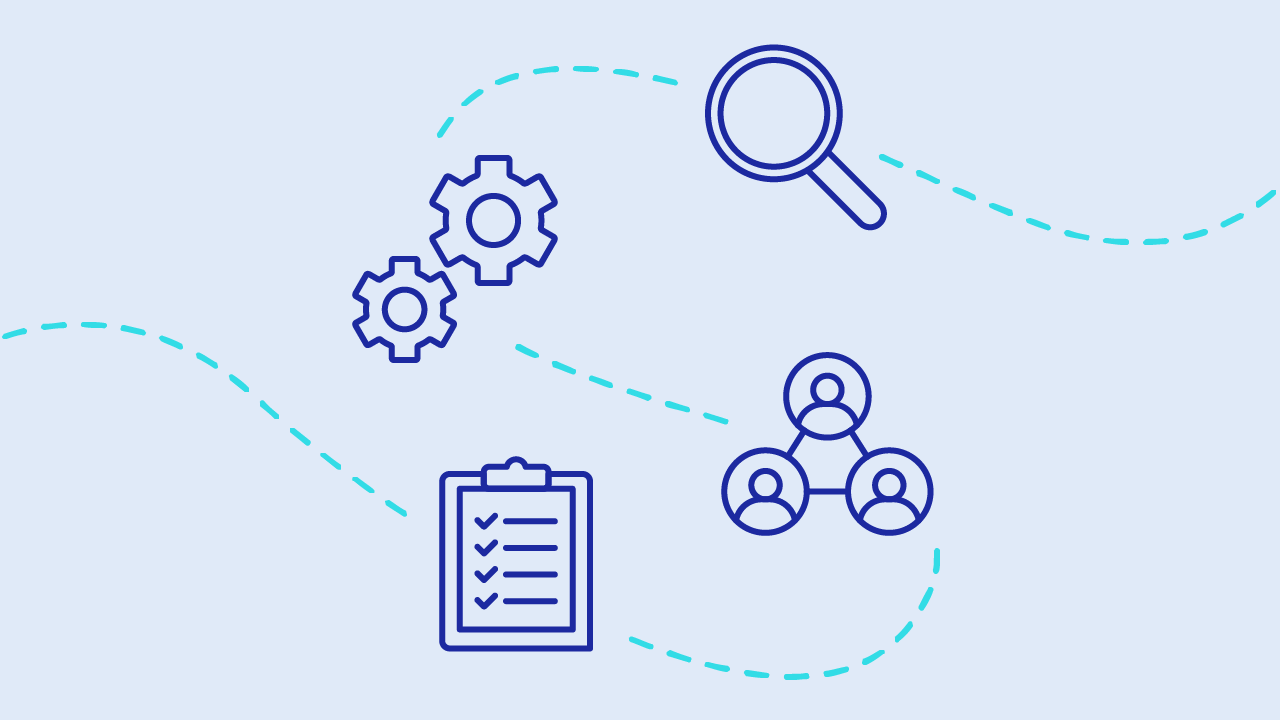Of all the frameworks out there, using the RACE model in PR campaign planning can make a massive difference to your process – and results.
Finding the right structure for your public relations (PR) plans and campaigns really depends on what you aim to achieve, the status of your organization, and how you – and your team – operate best. Understanding your strengths and ways of working lets you put your best foot forward when it it’s time to get your message out there.
Applying a framework or model to your campaign planning can change things significantly for the better. Using the RACE model can give you a structure to work with, ensuring you get the best out of everyone on your team and the activities you want to complete.
What Is the PR RACE Model?
The RACE PR model is designed to give you a structure for PR plans and campaigns, making it easier to craft compelling messages and improve brand reputation. There are four elements of the RACE model to help with each stage of your plans, and the acronym stands for:
- Research
- Action planning
- Communication
- Evaluation.
While you can use this framework for your overall PR strategy, it works just as well with campaign planning to make sure you have everything covered.
The PR RACE model is specific to your needs as a PR team, but there are lessons PR professionals can learn from marketers. Originally, the RACE model started as a marketing framework, designed for a wider set of activities, and looking at things slightly differently. It's worth being aware of in case there are ways you can work across teams and see if you can adapt the framework on a wider basis.
Why Should You Use the RACE PR Model?
There are plenty of ways to plan a PR campaign, but finding the right method can save you time and energy – letting you invest more in the campaign itself. The RACE model simplifies this, focusing on the four elements above and allowing you to break down the different aspects of a campaign within them.
This means every PR team can make use of the model to structure their campaigns and make sure they have everything they need to complete it.
Using the RACE Model in PR Campaigns
Each element of the PR RACE model can apply to your campaigns as well as your overall strategy. Making sure every campaign is fully researched and planned out will help you get the best results from them.
Here’s how to do it.
Research
Whether you have an idea, title, or brief for a campaign from your strategy, there’s a lot more research to do to make sure it’s going to deliver results. The main areas your research should focus on include:
- The topic of your campaign
- Data to back up what you want to say
- Expertise to add authority
- What your audience wants
- What channels your target audience uses
- The most relevant journalists to target for earned media coverage.
This first step will help bring your campaign to life. This research will help you understand the best angle – which will put your brand in the best light – and understand what you need to make a compelling campaign. Perhaps you’ll want to build your campaign around original research or data, or industry experts giving their views on the subject. Perhaps both.
Consider what the audience you’re targeting might want from your brand and your content. Do they want interviews, information, entertainment, or something else? What challenges do they have that your brand’s product or service can meet? If you don’t know these elements, your campaign might be great, but it won’t resonate with the people you’re trying to reach.
Your research should uncover where you can reach your target audience, giving your campaign more visibility. For example, where do they go to get their news and entertainment? Which journalists, media outlets, or influencers do they flock to most? Which social media platforms are they most active on?
Media outreach then becomes key to the success of your campaign, but it’s important to find the right journalists to reach out to. Our 2024 State of the Media Report revealed that journalists want PR professionals to understand their audiences and make sure they get content relevant to them, which is a part of understanding who your campaign is aimed at, too.

You should also look inside your organization and identify any collaborations needed with other teams to make sure you get the best coverage, information, and angles to make your campaign a success.
For example, you’ll likely want to partner with the marketing team, who have the means to amplify your campaign messaging further and can ensure consistent messaging across various channels. Your organization’s sales team can provide insight into customers’ pain points and objectives, while customer service will have visibility into common questions and challenges - all critical intel to help you refine your campaign messaging even further. Make sure you are also working with leadership teams to ensure your campaign goals align with business objectives.
Action Planning
Your research will have helped you get an idea of the data, expertise, and information you have for your campaign, as well as who it needs to reach. You can then turn to planning how the campaign will run.
You can then decide on your messaging. What it is you want to say and how can you best get that message across. This is a crucial factor for any PR professional to get right. Tailor your message to the audience you’re aiming to reach and create content that supports and helps convey that messaging.
There are myriad types of content to consider, including:
- Press releases
- Thought leadership articles
- Original research reports
- Whitepapers
- Social media posts
- Infographics
- Videos.
The research you did in the first stage, research, should help inform the types of content that will resonate most with your audiences.
The key to this step is making sure the core message is clear and consistent across all materials you plan to use for the campaign, so that your audience knows exactly what they should take from it.
When creating content, it’s important to think of another critical audience: the media. As noted above, media coverage can help bring crucial awareness to your campaign. According to our 2024 State of the Media Report, which looked at the kind of content journalists are most interested in, you can tailor your campaigns to include the content journalists actually want – which will help you get the coverage you want. Consider the list below when crafting your media outreach activation plan.

Once you’ve created the content to support your campaign messaging, you can begin the next step, which involves determining where your content should go.
Communication
The communication element is exactly what it sounds like – actually getting your campaign message out there.
With the content you’ve created in hand, it’s time to start distributing it across channels. Here again is where the research you did at the start will come in handy, helping you identify the best channels to reach your target audiences. In general, however, some common channels to help distribute your campaign content and messaging include:
- Press release distribution platforms
- Social media platforms
- Email newsletters or targeted emails to your database
- Website content (company blog, press room, etc.)
- Influencer partnerships
- Virtual or in-person events
- Sales enablement materials
- Paid advertising and sponsored content.
Again, don’t forget about dedicated outreach to the media. Unfortunately, this isn’t as simple as creating a news release and then emailing it to journalists and waiting for them to use it. Journalists are inundated with pitches on a daily basis, so having a compelling angle or attention-getting hook will help ensure your pitch doesn’t get lost in the noise.
Think about what journalists wants from a pitch and how you can incorporate that for the best chance of success.
Evaluation
With your campaign out in the world, your attention should turn to evaluating its performance. There are a range of metrics and KPIs to measure the performance of your campaigns, such as:
- Meeting specified objectives and goals
- Determining the ROI
- Monitoring the response to your brand.
Objectives and goals are the easiest metrics to track. These are set out by the PR strategy, and you can measure progress made toward them.
ROI is one of the most valuable ways of measuring your campaign’s performance. You can measure this by estimating the impact each piece of coverage brings, whether through sales, leads, or other actions. Compare these gains versus how much was spent on the campaign to determine its effectiveness.
Use media monitoring to measure the effectiveness of your campaign because you can actively see where your brand is being mentioned or spoken about and by who. When measured after a campaign goes live, you want to see a spike of positive conversations and mentions, and a little digging can prove whether these mentions are to do with your recent campaign.
However you choose to evaluate performance, think about the lessons you’ve learned and ways to improve the next campaign. You can then create a new plan based on this information and start the process again.
Tools to Help Implement the RACE PR Model in Your Campaign Plans
There are a range of tools that can help you use the RACE model in PR campaign plans. From helping with research to measuring results – and everything in between – there are ways to make each element implementing the model easier, more efficient, and more accurate.
Using GA4 (Google Analytics 4) to measure onsite content and track user journeys can help you understand what content performs well, and if there are any stumbling blocks users face on their journey. Planning and project management tools can help make individual tasks easy to assign, digest, and complete for any PR team – especially for larger campaigns where multiple people are involved.
Getting your message out to your audience and finding the conversations about your brand and products are an important part of any PR campaign. An all-in-one platform media intelligence platform like CisionOne can help with finding those conversations (through monitoring), as well as making sure you reach out to the most relevant journalists (via a comprehensive media database) to get the coverage you’re looking for. This saves you time and energy, which you can put into other parts of the campaign.
Find out how CisionOne can help with implementing the RACE model in PR plans and strategies by scheduling a demo with one of our experts.








